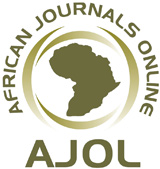Umar Zayyanu Usman, Ainul Bahiyah Abu Bakar, Anani Aila Mat Zin, Mahaneem Mohamed
Abstract
This study evaluated the phytochemical constituents using liquid chromatographmass spectrometry (LC-MS) analysis and in vivo effects of Malaysian propolis on plasma insulin, glucagon, oxidative stress status and histology of pancreas in diabetic rats. Analysis was carried out onwater (WEP) and ethanol (EEP) extracts of Malaysian propolis. Forty rats were assigned into five groups (n = 8 rats per group) i.e. non-DM, DM, DM+300EEP (300 mg/kg), DM+600EEP (600mg/kg) and DM+metformin (100 mg/kg). DM was induced and treatments were given daily by oral gavage for 4 weeks. LC-MS profile revealed 10 and 29 compounds in WEP and EEP respectively,which were mainly phenolic derivatives. Food intake, fasting blood glucose (FBG), glucagon, malonaldehyde and protein carbonyl were significantly higher while final body weight, insulin and total antioxidant capacity were significantly lower in DM group compared with non-DM group. There were significantly higher body weight, insulin level and total antioxidant capacity with significantly lower food intake, FBG, glucagon, malonaldehyde and protein carbonyl levels in DM+300EEP and DM+600EEP groups compared with DM group. Pancreas histology revealed islet cells regeneration in DM+300EEP and DM+600EEP groups. This study showed that Malaysian propolis EEP had higher phytochemical compounds which were mainly phenolic derivatives and in vivo study suggests its potential antidiabetic and antioxidant properties which could be due to the synergistic effect of some of these constituents.
* THESE STATEMENTS HAVE NOT BEEN EVALUATED BY THE FOOD AND DRUG ADMINISTRATION. THIS IS NOT INTENDED TO DIAGNOSE, TREAT CURE OR PREVENT ANY DISEASE.
